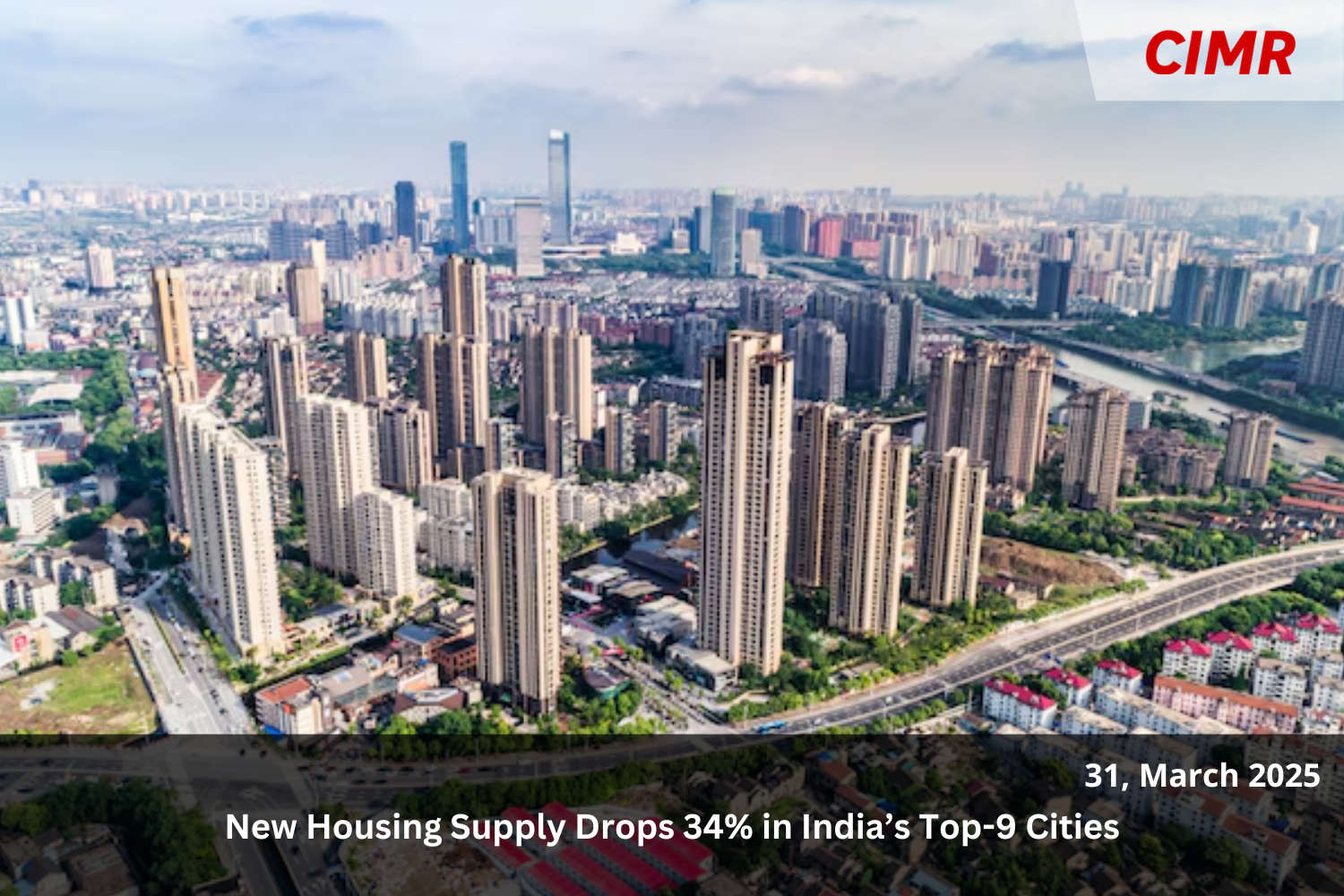India’s residential real estate market experienced a 34% decline in new housing supply from January-March 2025, with only 80,774 units launched compared to 1,22,365 units in the same period last year. The Mumbai Metropolitan Region also saw a sharp contraction in new launches, with Mumbai dropping 50% to 6,359 units.
Navi Mumbai dropping 24% to 5,810 units, Pune falling 48% to 12,479 units, and Thane dropping 50% to 11,205 units. Developers are likely to recalibrate their strategies in response to evolving demand dynamics have remained below 100,000 units. Housing sales also decreased by 23%, totaling 105,791 units.
In the first quarter of 2025, India’s housing market experienced a notable contraction, with new housing supply in the top nine cities declining by 34% to 80,774 units, down from 122,365 units in the same period the previous year. This marks the third consecutive quarter where new launches have remained below 100,000 units. Housing sales also decreased.
Among these cities, Bengaluru stood out as an exception, recording a 17% increase in new housing supply, reaching 20,227 units. The city accounted for 25% of total launches in Q1 2025, up from 14% in the same period last year. Conversely, other major cities experienced significant declines by 23%, totaling 105,791 units compared to 136,702 units year-over-year.
CRISIL Ratings has upgraded DLF Cyber City Developers (DCCDL) to CRISIL AAA (Stable) due to strong business fundamentals, high occupancy, and improved financial risk profile. DCCDL operates a commercial real estate portfolio of 40.4 million square feet, with 93% occupancy across key cities. The company plans to add office and retail space soon.
In terms of sales, only Bengaluru and Delhi-NCR reported growth, each with a 10% year-over-year increase. Bengaluru’s sales rose to 18,508 units, representing 17% of total sales, up from 12% in Q1 2024. Delhi-NCR’s sales increased to 11,221 units, accounting for 11% of total sales, up from 7% in the same period last year. Other cities faced declines in sales.
According to Samir Jasuja, Founder and CEO of PropEquity, the housing market is undergoing a correction after three years of record supply. Factors contributing to this downturn include rising home prices and investor caution amid geopolitical developments and certain weaknesses in the Indian economy increased to 11,221 units, accounting for 11% of total sales.
Despite these challenges, the market has demonstrated resilience, with a healthy Other absorption-to-supply ratio of 131% in Q1 2025, compared to 132% in Q4 2024 and 127% in Q3 2024. This indicates that while new supply and sales have declined, the demand relative to supply remains robust.
The traditionally high-supply markets of Hyderabad, Pune, and Thane, which led in launches during 2022 and 2023, have seen significant reductions. In Q1 2025, these cities collectively recorded 28,227 fewer units launched compared to the same period last year, with their combined share of total launches decreasing to 29% from 38% year-over-year.
In summary, the first quarter of 2025 reflects a cooling period for India’s housing market, characterized by decreased new supply and sales across most major cities. However, the sustained absorption-to-supply ratio suggests underlying demand persists, potentially setting the stage for market stabilization in the coming quarters.
In Q1 2025, new housing supply in India’s top nine cities declined by 34% to 80,774 units from 122,365 units a year ago. Sales also fell by 23%, totaling 105,791 units. Bengaluru was the only city with increased supply, while Mumbai, Pune, and Hyderabad saw significant drops. Rising home prices and economic uncertainties contributed to the slowdown, though demand remains relatively strong.
- Group Media Publication
- Construction, Infrastructure and Mining
- General News Platforms – IHTLive.com
- Entertainment News Platforms – https://anyflix.in/





